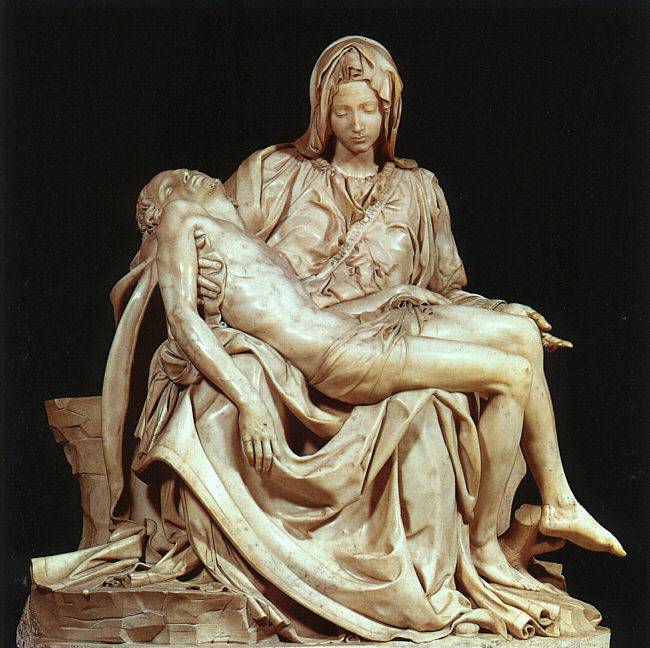 | ||||
| Michelangelo's Pieta |
 |
| Peter Chan's half-minute horror |
One knowledgeable artist is Michelangelo Buonarroti, best known just as Michelangelo. He is best known for his elegant sculptures, especially David. At a young age, Michelangelo went to study anatomy at the Garden of San Marco. There, he studied dead bodies and their form. His anatomical studies eventually led him to be very knowledgeable of the human form. This then further his understanding of the human body, which resulted in beautiful realistic sculptures in his careers. For example, by looking at Michelangelo’s Pieta, a sculpture of Mary and Jesus, the audience knows that Michelangelo knows how the human form must look like, how drapes fall on a person, and the facial expression of the subjects. The drapes on the forms look so detailed and the rendering so delicate it the audience automatically knows that Michelangelo has to have some lesson or knowledge about the human form and fabrics in order to create a piece that looks realistic.
A creative artist that I’ve been following is Peter Chan. Most of Chan’s works are on the comedian side. He takes a subject or an idea and twists it into his own. In a collaboration work between him and his friend, Bobby Chu, both used the concept of a horror movie and imaginatively create another concept of the ‘horror’ in a movie. By looking at the illustration, known as ‘half-minute horror,’ the audience (us) notices that the people in the theater are horrified by whatever is on the screen. However, what is more horrifying to the audience (us) is looking at the image is the people’s mouth; inside each person’s mouth is a mini monster drinking or eating whatever substance the people were putting in their mouth. Creativity is using a general known concept and pushing yourself to imaginatively make a new idea out of it; that is what Peter Chan did. So instead of sticking to the regular movie concept, illustrating a crowd of people watching a horror movie, Chan creates an image that interacts with the audience—playing with the audience’s emotions. When the artists do this, playing on their audience’s emotion, or somehow ‘awing’ them with a new idea, he or she is creative.
No comments:
Post a Comment